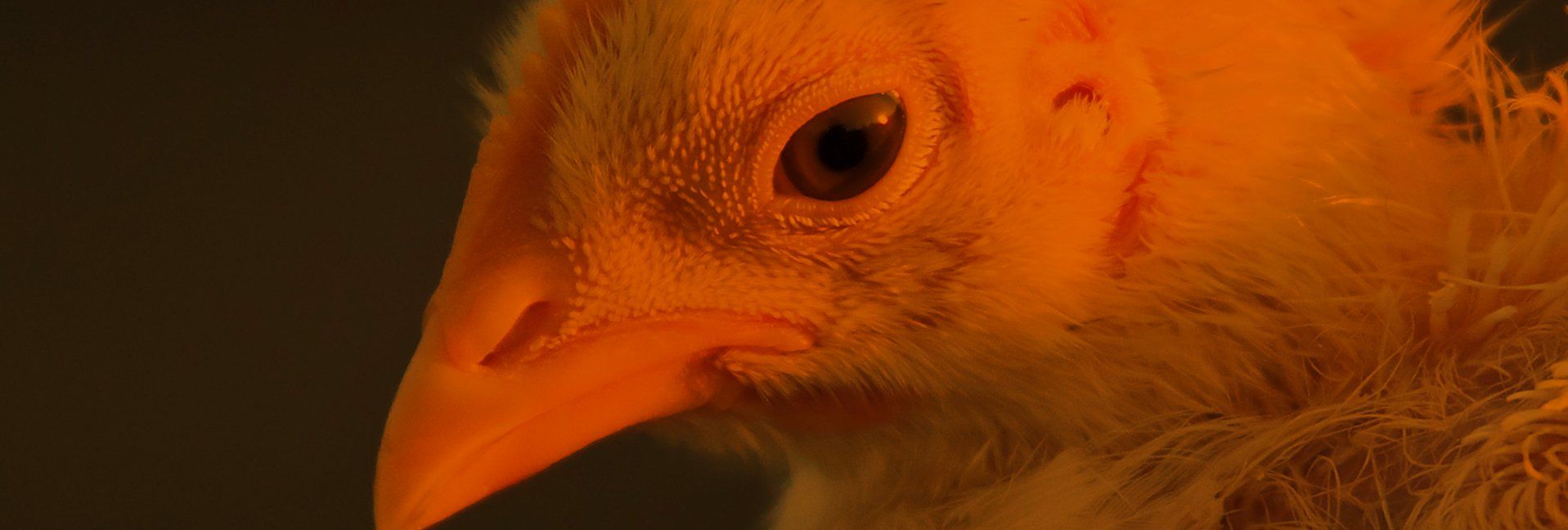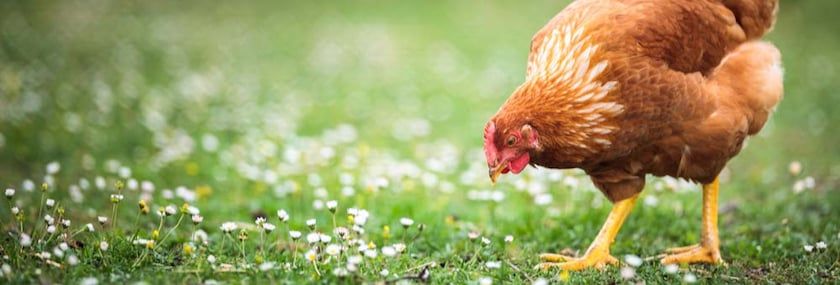Vaccinating Strategies for Chicks


Springtime is traditionally the most common time that people purchase or hatch out baby chickens. Among all the excitement of getting new chicks it’s easy to forget questions related to vaccination.
This article will focus on various vaccination approaches in chicks, either purchased or that you hatched yourself, and explain when they are not appropriate.
Note: It is important to realize that there are many types of vaccines and vaccination programs. This is because vaccination programs are based primarily on risk of getting the disease, availability of vaccines, climatic conditions, type of chickens (broiler vs. layer), and economics. Looking at the big picture—in addition to biosecurity—vaccines are appropriate to consider if you live in affected areas and want an extra level of protection.
Vaccines work because…
When you vaccinate, you are essentially producing a mild form of the disease in order to illicit an immune response. However, the vaccine strain is purposely a mild form as opposed to a virulent form that can cause disease and death. Vaccines do not cause disease, period.
That being said, one thing that makes vaccines complicated is that they don’t work 100 percent of the time (after all, nothing in medicine works 100 percent of the time) which can cause people to become skeptical of their efficacy.
Psychologically, we remember “vaccine failure” (ex. “We gave our chicken a Marek’s vaccine and the chicken got Marek’s anyway”) versus all the times we had vaccinated birds that didn’t get Marek’s Disease. Vaccine failure can happen for several reasons, including inactivation of the vaccine and a mismatch between the vaccine strain and the strain that the birds were exposed to.
Vaccinating programs can be confusing
Vaccination in backyard poultry can be somewhat confusing and challenging. There are many vaccines that are available for commercial poultry that are contra-indicated in backyard poultry.
For example, live vaccines against Infectious Bronchitis (IB) and Infectious Lagyngotracheitis (ILT) can have the capability to “revert to virulence” and cause an outbreak of disease that can spread beyond the vaccinated flock. In addition, the potential for new variants can result from “reassortants” between wild-type and vaccine strains making it even more difficult to treat affected poultry. (Reassortment is the mixing of the genetic material of a species into new combinations in different individuals.)
For these reasons, most poultry experts only recommend that backyard poultry enthusiasts vaccinate against the following (in order of importance, based on the prevalence of disease in backyard flocks):
1. Vaccination against Marek’s Disease
(either given in ovo or at 1-day of age post hatch)
2. Newcastle Disease
(18 days of age and then 6 weeks of age)
3. Vaccination against Dry Pox (4 weeks of age)
Let’s learn more about all three of these vaccines with a focus on when to use these vaccines in chicks and on young birds up to 10 weeks of age.
Marek’s Disease
Vaccination against Marek’s Disease (MD) constitutes an outstanding example of successful disease control in veterinary medicine. However, because the virus is so ubiquitous in the environment—infection of chicks can occur almost immediately after hatching—the ideal times for vaccination is in ovo administration on the 18th day of incubation or by subcutaneous administration of vaccine at one day of age.
If you purchase chicks from a feed store or hatchery, try to get chicks that are in ovo vaccinated. Since they are vaccinated while still in the egg, their immune systems have a “head start” and hence an advantage against the inevitable exposure to Marek’s virus when they hatch, compared to vaccination at day one of age. This is primarily because immunity typically develops in two weeks after vaccination.
If you hatch your own eggs, the in ovo vaccine is not an option (since the necessary machinery to vaccinate is not available) but vaccination at day one of age is also very effective. You can purchase the lyophilized Herpes Virus of Turkey (HVT) vaccine at many feed stores. The vaccine is reconstituted and given subcutaneously (aka underneath the skin) at one day of age.
While this is the only viable vaccine option for producers who hatch their own eggs, unfortunately the lyophilized HVT vaccine is the least effective of the MDV vaccines and will not offer protection against more virulent strains of MDV.
However, it should be pointed out that while Marek’s vaccines are very effective in preventing Marek’s Disease and the resulting tumor formation that Marek’s Disease typically causes, the vaccine is not considered “sterilizing” and therefore it doesn’t prevent infection and/or shedding of the pathogenic MD virus that is ubiquitous in the environment.
In addition, due to the neutralizing effect of maternal antibody on HVT, this vaccine can be ineffective in chicks depending on the vaccine status of the hen, or in situations of severe MDV exposure. Regardless of vaccine status, it is essential to place day old chicks in houses which have been thoroughly decontaminated to allow vaccinated birds time to develop immunity.
Newcastle Disease
The virulent forms of Newcastle Disease are serious business. Virulent Newcastle Disease vND is a highly contagious and deadly virus in birds.
In addition to biosecurity, vaccination should be considered especially in geographies near affected flocks. The LaSota and B1 vaccines are often available from feed stores. Make sure they are licensed in the U.S. In addition, follow the instructions or consult a veterinarian.
The best way to deliver the vaccine is via the eye drop method. Be aware that the vaccines can produce some mild clinical signs including a drop in egg production and some mild respiratory signs. Be aware also that vaccinations against vND often need to be given at least twice a year to remain efficacious after the initial vaccines at 18 days of age, six weeks, and 12 weeks.
Again, vaccination is not a substitute for good biosecurity, which is the best way to prevent your flock from getting infected from all infectious diseases…including vND.
Avian Pox
There are many different strains of Avian Pox. However, in North America the most common type of pox virus associated with poultry is dry pox. While mortality or death is uncommon, due to the drop in egg production or the downgrading of the carcass due to the skin lesions, this can be a significant economic issue.
Before discussing vaccination strategies, it is important to note that the virus is typically spread by either mosquitoes (which gets the virus from feeding on an infected bird and then feeds on other birds in the flock) or by contact from the scabs of an infected bird with an unaffected birds (i.e. inter-flock transmission). Also be aware that the virus can be carried to the flock by objects, known as fomites. This is especially significant for operations which have mixed-age flocks, since susceptible younger birds are often placed with older birds in houses that have not been cleaned and disinfected.
If a flock is at risk (based on history of neighboring flocks) or if the flock has been previously affected by avian pox, vaccination should be considered…in addition to mosquito control. To vaccinate a wing-stick method of vaccination is used using a two-needle applicator.
Vaccinated birds should be examined for “vaccination takes”—swelling and scab formation at the injection site seven to 10 days after vaccination. The flock can be vaccinated starting at one day of age with some of the attenuated vaccines; however in most cases you can wait until four weeks of age with a booster one month before egg production starts.
Flocks at risk should be vaccinated annually—ideally in the spring or summer since the disease is more likely in the fall and winter—if pox has been demonstrated in the area. It is recommend to use both the pigeon pox vaccine in combination with the fowl pox vaccine to achieve maximum coverage.
Not a replacement
Regardless of vaccination status, it is essential that poultry owners follow good biosecurity practices to help protect your birds disease.
These include simple steps like washing hands and scrubbing boots before and after entering a poultry area; cleaning and disinfecting tires and equipment before moving them off the property; and isolating any birds returning from shows for 30 days before placing them with the rest of the flock.
Vaccination for the above diseases can be part of a general strategy focused on protecting our birds from infectious diseases.
Tags:Pitesky's Poultry

Chicken Whisperer is part of the Catalyst Communications Network publication family.











